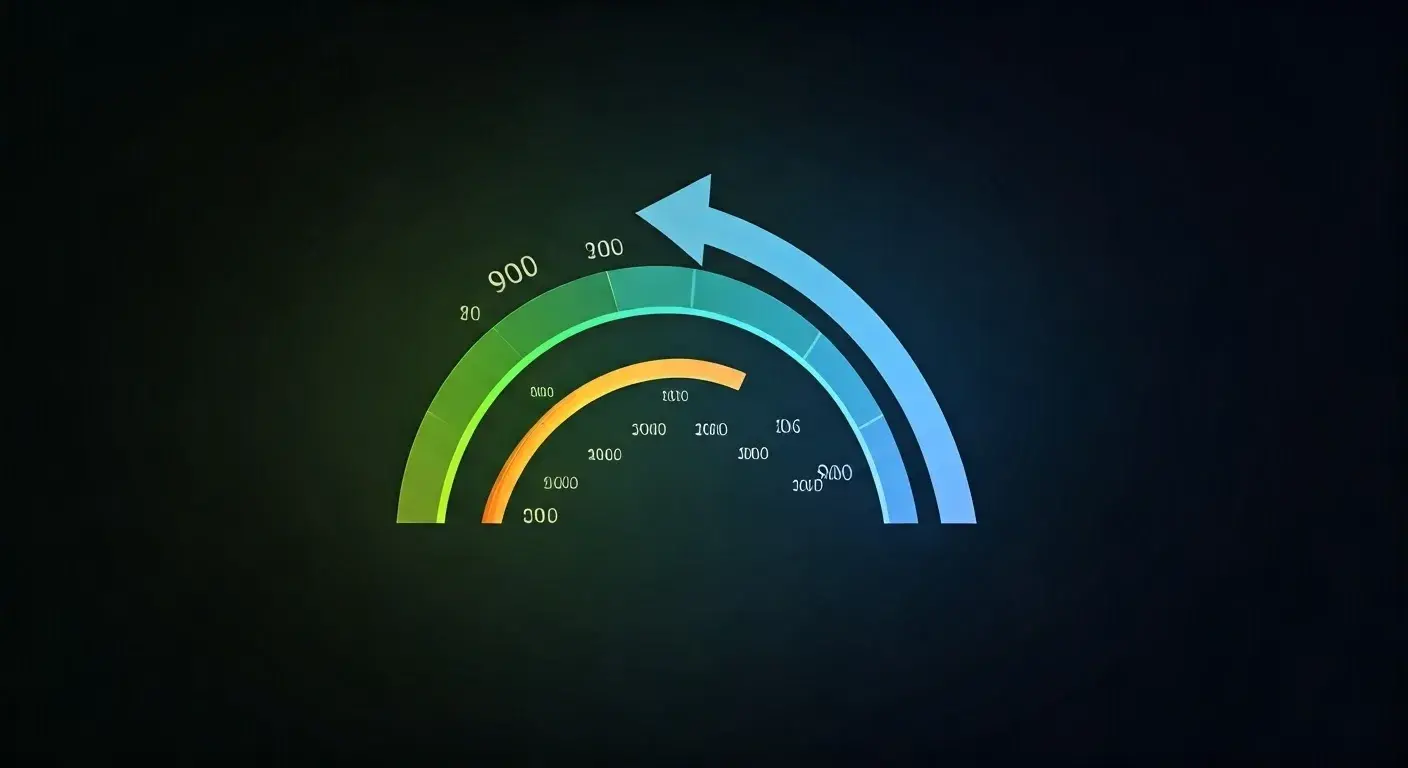-
Posted on: 30 May 2024

-
Understanding your credit score is crucial for your financial well-being. It affects your ability to get approved for loans, mortgages, credit cards, and even rental apartments. Often, people use the terms "FICO score" and "credit score" interchangeably, leading to confusion. While related, they aren't exactly the same thing. This comprehensive guide will delve into the intricacies of FICO scores and credit scores, highlighting their similarities and, more importantly, their differences.
What is a Credit Score?
A credit score is a numerical representation of your creditworthiness. It’s a snapshot of how likely you are to repay borrowed money based on your past credit behavior. Lenders use this score to assess the risk involved in lending you money. A higher score generally indicates a lower risk, which can lead to better interest rates and more favorable loan terms.
Think of your credit score as a report card for your financial habits. It summarizes your credit history, including your payment history, the amount of debt you owe, the length of your credit history, the types of credit you use, and any new credit you've applied for.
The Range of Credit Scores
Credit scores typically range from 300 to 850. The higher the number, the better your credit rating. Here’s a general breakdown of credit score ranges and what they typically indicate:
- 300-579: Poor
- 580-669: Fair
- 670-739: Good
- 740-799: Very Good
- 800-850: Excellent
What is a FICO Score?
FICO score is a specific type of credit score developed by the Fair Isaac Corporation. It’s the most widely used credit scoring model by lenders in the United States. The FICO score uses a complex algorithm to analyze your credit data and generate a three-digit score that reflects your credit risk.
While "credit score" is a generic term, "FICO score" is a brand name. It's like saying "soda" versus "Coca-Cola." Coca-Cola is a specific type of soda, just as FICO is a specific type of credit score.
The FICO Score Model: A Breakdown
The FICO score model weighs different factors to calculate your score. Here's a breakdown of the factors and their approximate weight:
- Payment History (35%): This is the most important factor. It reflects whether you've paid your bills on time. Late payments, collections, and bankruptcies can significantly lower your score.
- Amounts Owed (30%): This factor considers the amount of debt you owe compared to your available credit. High credit utilization (using a large percentage of your available credit) can negatively impact your score.
- Length of Credit History (15%): A longer credit history generally leads to a better score, as it provides more data for lenders to assess your creditworthiness.
- Credit Mix (10%): Having a mix of different types of credit (e.g., credit cards, installment loans) can be beneficial, as it demonstrates your ability to manage different types of debt responsibly.
- New Credit (10%): Opening too many new credit accounts in a short period can lower your score, as it may indicate a higher risk of default.
The Key Differences Between FICO and Other Credit Scores
While FICO is the most popular, it's not the only credit scoring model. Another common model is VantageScore.
VantageScore: An Alternative Credit Scoring Model
VantageScore was created by the three major credit bureaus: Experian, Equifax, and TransUnion. It aims to provide a more consistent and accessible credit scoring model. While the underlying principles are similar to FICO, there are some key differences:
- Scoring Range: Both FICO and VantageScore use a range of 300 to 850, but the interpretation of the ranges can differ slightly.
- Weighting of Factors: The weighting of different factors can vary between the two models. For example, VantageScore may place less emphasis on payment history than FICO.
- Data Requirements: VantageScore can score individuals with a shorter credit history than FICO. This can be beneficial for younger adults or those who are new to credit.
- Versions: Both FICO and VantageScore have different versions, each with its own nuances and algorithms. Lenders may use different versions depending on their preferences and the type of loan they are offering.
Why Different Scoring Models Matter
The existence of different credit scoring models means that you may have multiple credit scores. Your FICO score might be different from your VantageScore, and even your FICO scores from different credit bureaus (Experian, Equifax, and TransUnion) can vary.
This is because each credit bureau maintains its own database of credit information, and the different scoring models may weigh the information differently. Lenders may also use different credit bureaus and scoring models, which can lead to variations in the terms and conditions you are offered.
How to Check Your Credit Score (and Which One!)
It's important to check your credit scores regularly to monitor your credit health and identify any errors or inaccuracies. You can obtain your credit reports from each of the three major credit bureaus for free once a year through AnnualCreditReport.com.
While you can get your credit report for free, you typically have to pay a fee to access your FICO score or VantageScore. Many credit card companies and financial institutions offer free access to your credit score as a perk of being a customer. Be sure to check which score they are providing (FICO or VantageScore). You can also purchase your FICO score directly from the Fair Isaac Corporation or through various credit monitoring services.
What to Look For When Checking Your Credit Report
When reviewing your credit report, pay close attention to the following:
- Personal Information: Verify that your name, address, and other personal information are accurate.
- Account Information: Ensure that all of your credit accounts are listed correctly, including account numbers, balances, and payment history.
- Errors and Inaccuracies: Look for any errors or inaccuracies, such as incorrect account balances, late payments that you made on time, or accounts that don't belong to you.
- Negative Items: Be aware of any negative items on your credit report, such as late payments, collections, or bankruptcies.
How to Improve Your Credit Score (Regardless of the Model)
Improving your credit score takes time and effort, but it's a worthwhile investment in your financial future. Here are some key strategies to boost your creditworthiness:
- Pay Your Bills on Time: This is the most important factor in determining your credit score. Set up automatic payments or reminders to ensure that you never miss a payment.
- Keep Your Credit Utilization Low: Aim to use no more than 30% of your available credit on each credit card. Lower is even better.
- Pay Down Debt: Reducing your overall debt burden can improve your credit utilization ratio and boost your score.
- Don't Open Too Many New Credit Accounts: Applying for too many new credit accounts in a short period can lower your score.
- Diversify Your Credit Mix: Having a mix of different types of credit can be beneficial, but don't open new accounts just for the sake of diversifying.
- Monitor Your Credit Report Regularly: Check your credit report regularly for errors and inaccuracies and dispute any errors immediately.
- Become an Authorized User: If you have a friend or family member with a credit card and a good payment history, ask if you can become an authorized user. This can help you build credit without having to apply for your own credit card.
The Impact of Credit Scores on Your Financial Life
Your credit score plays a significant role in various aspects of your financial life, including:
- Loan Approvals: Lenders use your credit score to determine whether to approve your loan applications.
- Interest Rates: A higher credit score can qualify you for lower interest rates on loans and credit cards, saving you money over the long term.
- Credit Card Offers: You're more likely to receive better credit card offers with lower interest rates and more rewards if you have a good credit score.
- Insurance Premiums: In some states, insurance companies use credit scores to determine insurance premiums.
- Rental Applications: Landlords often check credit scores to assess the risk of renting to potential tenants.
- Employment Opportunities: Some employers may check credit scores as part of the hiring process.
Rebuilding Credit After a Setback
If you've experienced a financial setback that has negatively impacted your credit score, it's possible to rebuild your credit. Start by addressing the underlying issues that led to the problem, such as overspending or missed payments. Then, focus on implementing the strategies outlined above to improve your creditworthiness.
Conclusion: FICO and Credit Scores - Understanding the Relationship
While the terms "FICO score" and "credit score" are often used interchangeably, it's important to understand that FICO is a specific type of credit score. There are other credit scoring models, such as VantageScore, that may use different algorithms and data requirements. Regardless of the model used, maintaining a good credit score is essential for your financial well-being. By understanding the factors that impact your credit score and implementing strategies to improve it, you can unlock better financial opportunities and achieve your financial goals.











